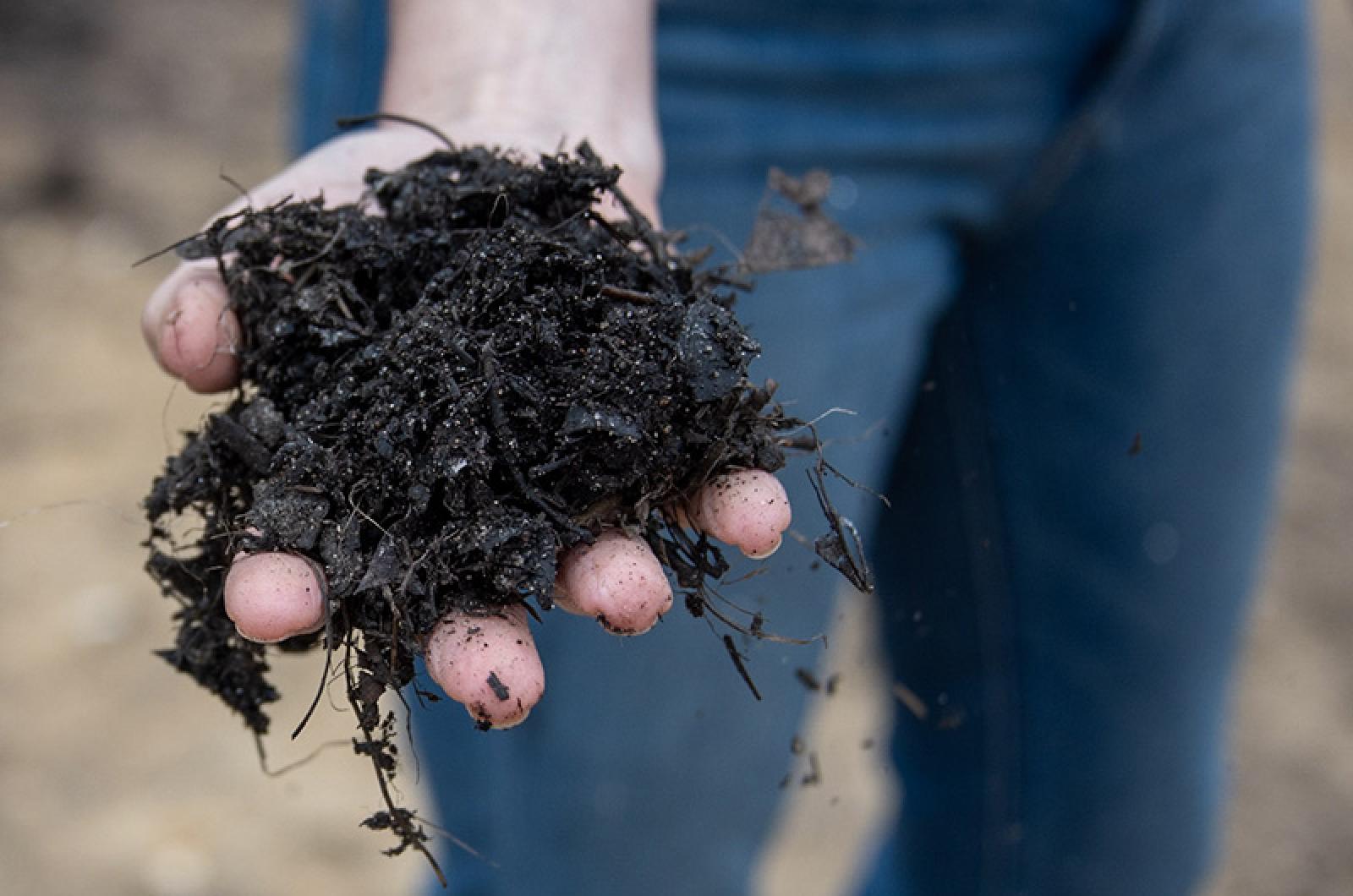Every year, 6,500 tons of watermelon rinds from hundreds of summer picnics, skeletons from bunches of grapes, citrus peels from fancy cocktails and countless eggshells, skins, husks, soggy napkins, lobster appendages, heads of romaine lettuce and moldy bread are shipped off the Vineyard at a premium.

After paying extra for food to be transported across the Sound, Vineyarders send the equivalent of 261 trucks of food waste back to the mainland annually according to estimates from an Islandwide organics feasibility study completed in 2017. At the same time, thousands of cubic yards of compost are shipped to the Island to enrich the soil.
Leaders at the Martha’s Vineyard Food Waste Initiative and its partners aim to change all that.
In the past three years, the group has dedicated itself to food recovery, collecting food waste from local businesses to redistribute to people and animals or, if it’s not salvageable, turn into compost. The initiative, which is affiliated with Island Grown Initiative and has been largely funded through the family foundation of Betsy and Jesse Fink, is headquartered on IGI’s Thimble Farm in Vineyard Haven. Their stated goal: to develop a strategy to reduce food waste on the Island by 50 per cent by 2030.
It seems ambitious, but what started in 2016 as a pilot program with seven businesses and a borrowed pickup truck has already expanded to all the Island landfills and 38 businesses. In 2016, 17 tons of food waste were processed. This year the program expects to process 360 tons. The program has acquired a giant, rotating in-vessel composter, a front end loader and a specialized waste collection vehicle for the operation.
“I call it the waste wagon sometimes, or the green machine,” said program coordinator Aaron Lowe, who drives the retrofitted 1998 Ford F 350 to Island businesses to pick up waste. On a recent morning, he drove the truck to Black Sheep in Edgartown, hooked a tote of food waste to the truck’s kicker and flipped the container into the bed of the truck. There was a loud slopping sound and a pungent smell.
“It’s a thing of beauty, isn’t it?” Mr. Lowe said, using the truck’s built-in pumper to spray down the trash can. Other stops that morning included the Oak Bluffs transfer station and MV Salads on Circuit avenue. Mr. Lowe brings the food waste back to Thimble Farm where he mixes some with other organic material to load onto a conveyor belt into the recently acquired in-vessel composter.
The composter was bought second hand from an operation in Saugus last winter. A rusted rotating drum roughly the size of a semi trailer, it is situated on a subtle incline at Thimble Farm. The machine is 20 years old, can process 2.5 tons of waste per day, and is estimated to reduce the total time for the breakdown of food into compost from six months to three months. Once the waste passes through the machine, it is deposited in windrows to complete the breakdown process.
Standing near the in-vessel, Martha’s Vineyard Food Waste Initiative project director Eunice Youmans said the machine could be expected to run for 15 to 20 more years with just replacements of the single chain and maintenance of the simple electrical system. She picked up a handful of compost.
“It just smells like earth or pipe tobacco or something,” she said. The compost is sold on the Island, keeping local nutrients in the soil.
The remainder of Mr. Lowe’s load of food waste goes to feed the farm’s 290 eager chickens. They consume a half ton of waste every week.
Sitting in the waste wagon, Mr. Lowe summed up a central philosophy of the food recovery program.
“Food waste is a resource you can harness,” he said.
Island Grown Initiative has been in the food recovery business for about a decade; through their gleaning program, excess food is collected from farms and redistributed. More recently under the leadership of executive director Rebecca Haag, efforts have become more collaborative and expansive.
Ms. Youmans has a long list of partner organizations. Initially, the group borrowed a truck from the Martha’s Vineyard Shellfish Group and dropped food waste off at Morning Glory Farm. This year, they began working with Cronig’s Markets to redistribute excess food. During the Stop & Shop strike, the group recovered 3,000 pounds of food. Food waste totes are now available at all Island dumps with a $2 charge to drop off a five-gallon bucket.
The organization also works with Island schools, the Boys and Girls Club and the Wampanoag Women’s Center. In the winter, they plan to use the recently completed commercial kitchen at Camp Jabberwocky to process gleaned food into soups and baked goods.
Ms. Youmans said while the program has grown dramatically in recent years and has not yet reached capacity, it cannot accomplish the goal of a 50 per cent reduction in food waste by 2030 alone.
“We’re trying to demonstrate that these are financially viable programs,” she said.
In 2015, the Massachusetts Department of Environmental Protection passed banned the disposal of food waste for any business that produced more than a ton of food waste in a single week. Ms. Youmans said enforcement of the ban has not been strict while food processing infrastructure is established, but she expects that to change at some point in the near future.
In recent weeks, she has visited selectmen around the Island advocating for more action to establish composting programs. She said the final frontier will be residential waste, and said the Island can be an example for communities around the country.
“We need to think about what the solution can be on the Island,” she said. “We need to think about how we are going to manage this.”









Comments (4)
Comments
Comment policy »